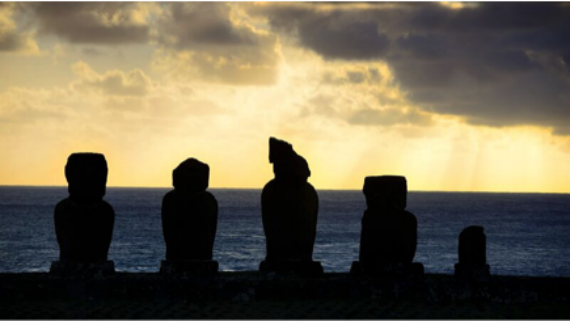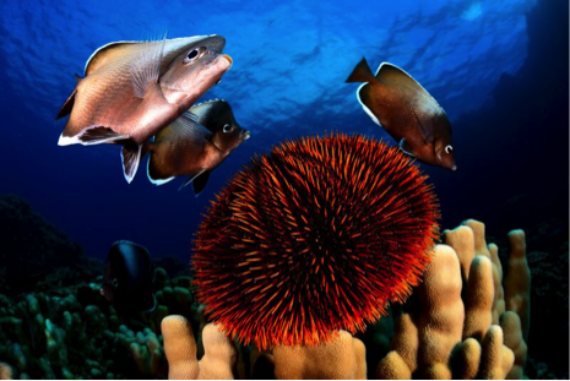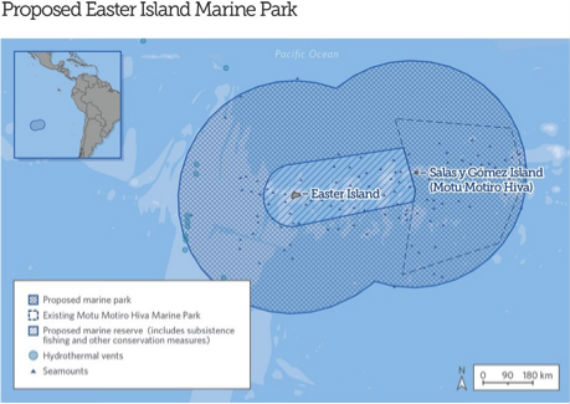
World famous for its moai, Easter Island -- also known as Rapa Nui -- also boasts waters of brilliant biodiversity. Photo Credit: Eduardo Sorenson/The Pew Charitable Trusts
Imagine if your livelihood depended on the fish you caught from the ocean. Imagine if these fish also fed your family. Now pretend that every time you go out in your boat, you catch far fewer fish than you did 10 years ago. When you are in the water, you are struck by how much less fish there are than when you were growing up.
This is the situation the Rapa Nui -- the indigenous people of Easter Island -- have found ourselves in. Our Polynesian ancestors traversed Polynesia's waters using only the stars and the ocean as their guides. The legacy of our ancestors' impressive seafaring skills and deep connection to the water has been passed down for generations, and is an integral part of our daily lives and traditions. Our fishing techniques are the same ones that have been used for thousands of years.
But our waters are under constant threat from poachers and other human activities damaging the environment. Sometimes we see bottles or other garbage wash up to our shores from far beyond our boundaries. The Rapa Nui recognized that if we were to save our livelihoods, protect our culture, and ensure that there would be fish for our children and grandchildren, something needed to be done.
While Easter Island is known all over the world for our giant moai statues, fewer people know that our waters contain brilliant biodiversity, with 142 species that can be found nowhere else on Earth. Our waters are rich in nutrients that allow unique sea creatures to thrive in extreme temperatures. Our part of the Pacific Ocean is an important spawning ground for many species critical to healthy ecosystems, including tuna, sharks, marlins, and swordfish.
We created the Rapa Nui Ocean Round Table (called Te Mau o Te Vaikava o Rapa Nui in Rapa Nui dialect) which comprised local organizations that each have an important stake in the health of our ocean. We worked together for over a year to develop a strong ocean protection plan to present to the central Chilean government and, though it was not always easy, we shared a common goal: to ensure a vibrant ocean for Easter Island for generations to come.
To achieve this, we have been able to consult partners -- such as scientists, enforcement experts, the Bertarelli Foundation and The Pew Charitable Trusts, who we've worked with since 2012 -- to inform our efforts. We reviewed research which shows that fully protected areas give fish space to reproduce and thrive ultimately resulting in more fish for the ocean. Over time, this will help rebuild critical populations of marine life throughout Easter Island -- which will benefit our fishing community while improving the health of the marine environment.

Many native species can be found in Easter Island's waters, including the Easter Island Butterfly Fish. Photo Credit: Eduardo Sorenson/The Pew Charitable Trusts
Our plan builds on the Polynesian tradition of rahui, which is a temporary ban on fishing for key species or on certain reefs to prevent overfishing. The plan includes a very large, fully protected marine park complemented by an area where local traditional fishing and other conservation measures would be managed in line with the Polynesian practice of tapu.

The Rapa Nui proposed marine park and reserve for traditional fishing will be one of the largest protected areas in the world. Graphic by The Pew Charitable Trusts
To our excitement, on October 5, President Michelle Bachelet announced in front of world leaders at the Our Ocean conference that our proposal will become a reality. This plan will make Easter Island one of the largest protected areas of ocean in the world, and a model for conservation of indigenous traditions.
Our plans for a marine park are similar to what our Hawaiian cousins advocated for when the United States created the Papahānaumokuākea Marine National Monument nearly 10 years ago. Hawaii and Easter Island share the same ocean heritage, and together with New Zealand, form part of what is known today as the Polynesian Triangle.Our cultures recognize the importance of the ocean and that its resources need to be well managed in order to be sustained.
We are at a critical moment for our planet. We hope Easter Island's plan becomes one that other island communities and leaders will consider. We would be glad to share our experiences and the lessons we've learned with them. Our oceans are depending on us to take action.